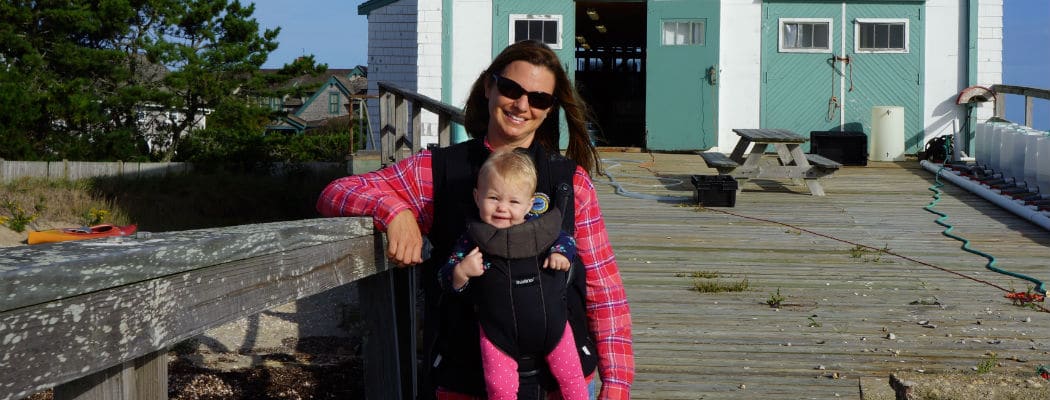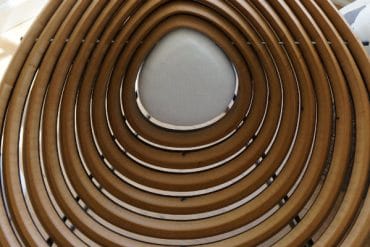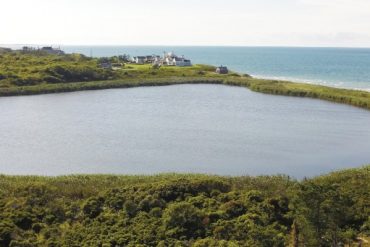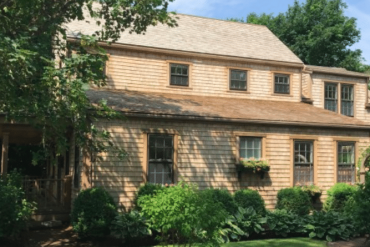A quick chat with Nantucket Town Shellfish Biologist, Tara Riley.
 N MAGAZINE: What originally brought you to Nantucket?
N MAGAZINE: What originally brought you to Nantucket?
RILEY: I had no idea that Nantucket even existed before applying for the Town Shellfish Biologist job in 2009 via the internet. When I came for the interview, I instantly fell in love with the island and the opportunity to convert the boathouse on Brant Point into a functional shellfish hatchery in order to preserve the bay scallop fishery.
N MAGAZINE: As a shellfish biologist, what is it about Nantucket that appeals to you over other places in the country — or even the world — where you could be doing similar work?
RILEY: Nantucket has one of the last commercial fisheries for bay scallops. The idea that there is an opportunity to set goals on a practical level and see results in the form of shellfish stock enhancement appealed to me from the start. Nantucket is comprised of a very progressive thinking community, the fact that we have a shellfish management plan already in place to use as a guide is an amazing tool that many communities lack. This island is so vibrant and has provided me with a dream job, a loving family, and a place to finally call home.
N MAGAZINE: What is it about Nantucket’s water and ecosystem that make it one of the last surviving East Coast habitats for bay scallops?
RILEY: One of the advantages that Nantucket has over other communities is the fact that it is located over 30 miles offshore, so when it comes to shellfish management decisions in regards to water quality, we ultimately have control over what goes into our harbors and won’t be immediately affected by mainland communities not complying with our standards. If we can get our nitrogen inputs under control, our eelgrass may have a chance to rebound.
 N MAGAZINE: What efforts have been made by the town and the Nantucket Shellfish Association to revive this mainstay of our off-season economy?
N MAGAZINE: What efforts have been made by the town and the Nantucket Shellfish Association to revive this mainstay of our off-season economy?
RILEY: The town has embraced our shellfish management plan which was funded by the Nantucket Shellfish Association. Our department uses it as a guide for prioritizing research and projects appropriate for Nantucket. The Nantucket Shellfish Association has played an integral role in the success of all of our town shellfish projects, especially the Bay Scallop Larval Release Program. With NSA’s support we have gone from releasing 5 million larvae in 2010 to 525 million larvae over the last five years.
N MAGAZINE: Have you made any significant adjustments to the program or processes since its advent in 2009?
RILEY: We have worked really hard within the community and the fishery to prove that our program is making a difference. Like any stock enhancement program, we see our fair share of obstacles. The most significant adjustment will begin with the renovations for the Brant Point Shellfish Hatchery slated to occur this fall, allowing us to substantially increase our shellfish production capacity and outreach. I truly believe that our future challenges will pertain to how we manage our inputs into the harbors. Good water quality and healthy habitats go hand in hand but you have to really pay attention and be proactive.
 N MAGAZINE: How has the yearly bushel count changed due to the propagation program? Is there a target bushel number that you’re working toward or that equals success to you?
N MAGAZINE: How has the yearly bushel count changed due to the propagation program? Is there a target bushel number that you’re working toward or that equals success to you?
RILEY: It’s difficult to evaluate the program on the bushel count alone…there are some discrepancies between state and town reports, but it is certainly one piece of the puzzle that is tangible. The bushel count for the most part has increased from 7,000 bushels in 2009/2010 to as high as 25,000 since the program started. We would like to reach a sustainable level that has consistency and would encourage current resident fishermen and new entries to continue to participate in a viable commercial fishery. In addition to the fishery, bay scallops act as natural filters and improve the quality of water where they are present. Our goal is to continue to “enhance” the natural scallop production that occurs each year while improving water quality at the same time.
N MAGAZINE: What is one thing that people would be surprised to learn about a bay scallop?
RILEY: Scallops, especially the juveniles, can get stranded on the shore in large quantities during winter storms. We rely on our stranding team and the community to help save the scallop seed and put it back into deeper water.
N MAGAZINE: Raking vs. diving — is one more effective than the other?
RILEY: I think it comes down to personal preference.
 N MAGAZINE: Can you share any secret spots around Nantucket for the best scalloping?
N MAGAZINE: Can you share any secret spots around Nantucket for the best scalloping?
RILEY: Scallop populations are variable from year to year and what was terrible last year, may be great this year… My favorite spot is to dive over near Esther’s Island. The eelgrass is long and beautiful and there are usually some nice pockets of scallops in the area.
N MAGAZINE: Favorite way to eat bay scallops?
RILEY: I have three favorite preparations: just simply seared off in clarified butter, or tossed in a little truffle oil, lemon thyme, cracked black pepper and lightly cooked on a hot Himalayan salt stone, or grabbing a fried bay scallop sandwich from the great ladies down at Sayles Seafood.
N MAGAZINE: Your husband, Matt Herr, owns Grey Lady Oysters. Does he also participate in the scalloping season?
RILEY: When Matt is not busy with the oyster farm or conching, he does participate in the commercial bay scallop fishery. He was the first fisherman to teach me how to really work the scallop boat and how and when to fish certain areas. He sells all of his catch through a local wholesale dealer which then get distributed to various vendors.
 N MAGAZINE: If you were to make a time capsule with the 5 items that most represent Nantucket to you, what would they be?
N MAGAZINE: If you were to make a time capsule with the 5 items that most represent Nantucket to you, what would they be?
RILEY: I would enclose pictures of our two native kids growing up on the island, sand from Brant Point Beach where Matt and I first met and were married, my husband’s scallop shell collection from many years of scalloping – boxes and boxes of beautiful shells and anomalies (and I swear that he remembers where each one came from and when he collected it!), a packet of native preserved eelgrass seeds (just in case), and finally, a letter to the future shellfish biologist expressing my hopes for the future of Nantucket’s shellfisheries.






